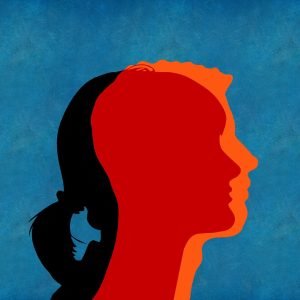
Researchers at the Johns Hopkins University School of Medicine have mapped variation in human stem cells that explains how cells of an individual may shape a unique “developmental dance” at the molecular level, thereby controlling how the brain and body are created. The findings further our understanding of the origins and implications of cellular variation in people and may advance the design of individualized therapeutics and methods to rebuild diseased or damaged human organs.
The study, published Sep. 10 in Stem Cell Reports, used human induced pluripotent stem cells—a type of stem cell that is equivalent to cells in early embryonic development that can develop multiple types of tissue. Studying pluripotent cells from several donors showed how genetic and epigenetic (nonnuclear DNA) factors contribute to individual variation in early brain development.
“The entirety of each individual human body is created from a single cell, and as cells of the developing embryo begin to divide, they perform genetically programmed choreography to construct the new human,” says Carlo Colantuoni, Ph.D., assistant professor in the departments of neurology and neuroscience at the Johns Hopkins University School of Medicine.
But, notes Colantuoni, while this developmental dance has major steps that are consistent across the human population (and the animal kingdom), this study has uncovered molecular patterns and gene expression traits that modify the conserved human steps and create unique individual development.
In this study, researchers at The Johns Hopkins University and Yale University used a process known as “cellular reprogramming,” in which mature cells can revert to their embryonic pluripotent status—a technique that won a Nobel Prize in 2012. Specifically, the researchers took skin cells from adult humans and returned them to an early embryonic state. Called induced pluripotent stem cells (iPSCs), they have the potential to develop into any human body cell.
Researchers let the iPSCs grow and interact unconstrained, enabling cells to reveal their inherent nature and individuality. RNA sequencing, which examines how much RNA is being produced from each gene, gave researchers a detailed molecular perspective on what the cells were doing.
Then, by combining the RNA data from iPSCs with data from developing mouse embryos, the researchers mapped variation of the donors’ cells onto the landscape of mammalian development. This allowed observation of systematic differences in how individual human cells navigate early development—differences also observed in public data from 100 human stem cell donors.
Researchers saw two types of patterns, or rhythms, of the developmental dance emerge from the RNA data. The first type of pattern was consistent across all individual donors, defining large modules responsible for creating elements of the human body such as the brain, heart and liver. Patterns of the second type were more subtle, newer in evolutionary terms and present only in the cells of specific individuals, regardless of the final function of the cells.
Notably, the newer patterns that show individual variation in human programmed choreography were present not only in the cells observed in the laboratory, but also in the mature cells of the donors’ bodies. The researchers say this indicates that the variations they saw in cellular development, each specific to an individual person, influenced the steps the donor cells took during early development.
By logical extension, the scientists say, their findings not only indicate the unique steps an individual’s cells take, but also that these cells hold information about the health or risk of diseases of a person over their lifetime. Colantuoni says these insights may pave the way for individualized approaches in regenerative medicine that are more precise.
“We advocate studying induced pluripotent stem cells and their derivatives to understand each patient’s risk for complex disease and specific treatments that will be most effective for that individual,” says Colantuoni. “We see a future in which a patient’s traditional medical history, genome sequence and living cells are routinely used together to diagnose and customize treatment for patients.”
Colantuoni says scientists are just beginning to uncover the specific molecular mechanisms underlying differences in human cellular development. More studies with larger and more varied donor pools are needed to understand the long-term health impacts of an individual’s developing cells dancing to the beat of their own drum.
Other scientists who have contributed to this research are Suel-Kee Kim, Seungmae Seo, Genevieve Stein-O’Brien, Amritha Jaishankar, Kazuya Ogawa, Nicola Micali, Yanhong Wang, Thomas Hyde, Joel Kleinman, Elana Fertig, Joo Heon Shin, Daniel Weinberger, Joshua Chenoweth, Daniel Hoeppner and Ronald McKay.
More information:
Suel-Kee Kim et al, Individual variation in the emergence of anterior-to-posterior neural fates from human pluripotent stem cells, Stem Cell Reports (2024). DOI: 10.1016/j.stemcr.2024.07.004
Citation:
Stem cells map reveals molecular choreography behind individual variation in human development (2024, September 25)
retrieved 25 September 2024
from https://medicalxpress.com/news/2024-09-stem-cells-reveals-molecular-choreography.html
This document is subject to copyright. Apart from any fair dealing for the purpose of private study or research, no
part may be reproduced without the written permission. The content is provided for information purposes only.







